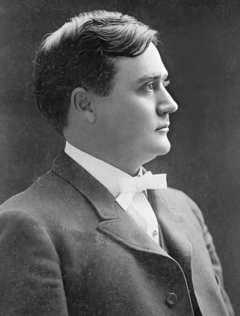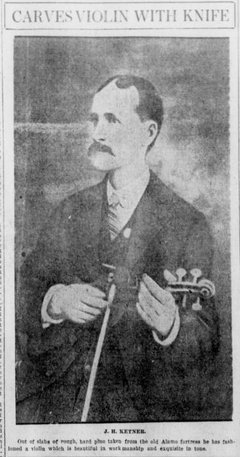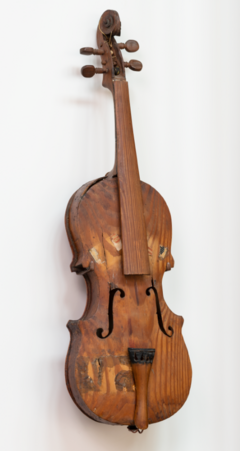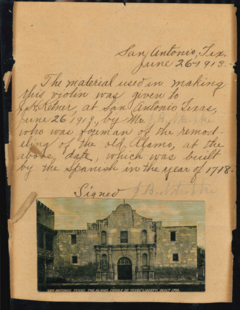In 1911, then Texas Governor, Oscar B. Colquitt, had the State legislature appropriate $5,000 for restoration of the Alamo Church and Long Barrack. The work continued until the appropriated funds ran out in 1913 and it was in that year that a foreman for the work, State Inspector of Masonry, Mr. J.B. Nitsche, took a piece of wood from the “Old Alamo” and presented it to Mr. J.H Ketner.
Mr. Ketner took the piece of pine on June 29th and with two pocketknives, began to carve out a violin. Through blistered hands and a sprained wrist, Ketner completed his project on July 15th. Soon after, Ketner took this piece and played its first notes for Mr. Nitsche in the Alamo.
According to newspapers of the time, a previous violin was carved from Alamo timbers by a Mr. Holmes, however, to ensure the validity of the claim of using Alamo timbers for the Ketner Violin, Mr. Nitsche, signed a note to certify that the materials he provided were from the “Old Alamo.” The creation of this violin sparked much interest and the piece was put on display for 10 days in the front window of Goggan’s Music Store, then located on Broadway and Travis. Records show that the violin was not just crafted out of pine but also has elements made from cypress and black walnut.
The materials note, violin, and two pocketknives used to carve the piece, were donated by Mr. J.H Ketner. The Violin is now on display at the new Ralston Family Collections Center.






